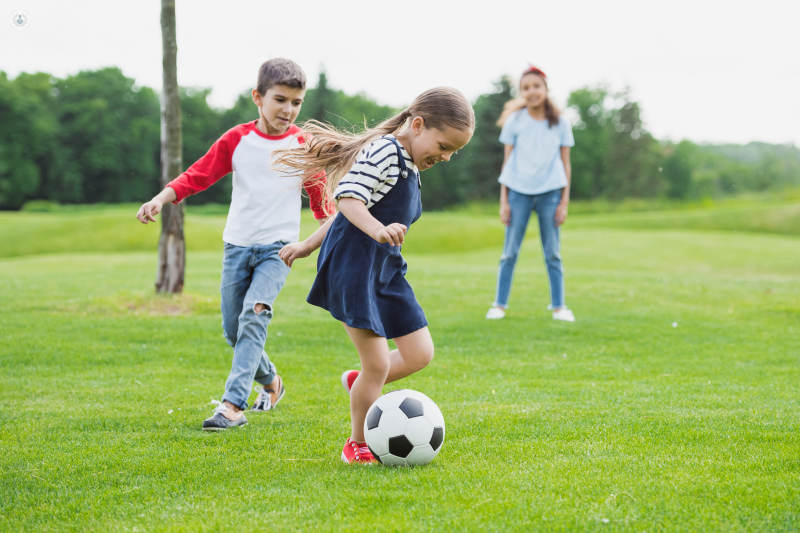ACL injuries in children and adolescents
Escrito por:Unfortunately, injuries to the anterior cruciate ligament (ACL) are increasing in children. The reason for this is not clear but it is related to the intensity and frequency at which some children play sports today, the footwear they use, playing surfaces and the coaching techniques that are used.
An injury to the anterior cruciate ligament is often a significant injury during a match. Often the player cannot continue. The knee can become swollen quite quickly and can feel unstable. Very often the player will have heard or felt a "pop" as the ligament was injured. Often, if the player tries to return to sport some weeks later, the knee will not support them.
Orthopaedic surgeon MR Jamie Arbuthnot tells us more about what happens when a young person injures their ACL and what can be done to fix it.

Who is most at risk of injury?
The risk of sustaining an injury to the anterior cruciate ligament is mostly related to the type of sport. Twisting and turning sports have the highest risk, with netball, basketball, football and skiing being the sports where young people are most likely to get injured, particularly in the UK.
Can someone carry on playing sport with an ACL tear?
Following a diagnosis of an ACL injury, some surgeons may advise patients to attempt returning to normal activities with a course of rehabilitation. Some surgeons recommend a brace or support for the knee, while others favour a more active intervention and feel that the best chance for a good recovery is to allow for a high level of activity to rebuild the ligament sooner rather than later. Every patient is different and everyone has different demands and expectations from life and sport. The best advice is to find a reputable knee surgeon and talk through the options as they apply to you.
How are ACL tears treated in children and adolescents?
Many surgeons carry out knee surgery if a child or adolescent has an ACL injury. It’s imperative to see a knee specialist who carries out knee surgery in younger patients regularly. The risk of failure for younger patients is much higher due to the amount of sport they still have to play and the technical aspects of rebuilding a ligament in a patient who’s still growing.
Most surgeons favour surgical reconstruction, even in younger patients as the risk of leaving the knee unstable is too high without it. Left untreated, the knee can be untrustworthy and ‘giving way’ episodes can result in more damage to the knee.
What is the long term impact of an ACL tear?
The moment the ACL is damaged is an unfortunate moment for the knee. The energy transmitted during the injury often results in damage to the cartilage and meniscal tissue that can leave a long term impact. Generally, the state of the other structures in the knee when the ligament is surgically reconstructed is the biggest factor in knowing how well the knee will cope after the injury.
There is a risk of arthritis after an ACL injury. It has been shown that a delay in surgical ACL stabilisation results in an increased risk of damage to the meniscal cartilage. Damage to these structures is associated with an increased risk of arthritis. ACL reconstruction carries a very good chance of stabilising the knee and protecting the meniscal cartilage from further damage but cannot guarantee that the knee will not develop wear and tear signs as time goes on.
How can someone slow down the risk of wear and tear progressing following ACL injury?
Many factors are important in trying to slow down the progression of arthritis. Many surgeons will be keen to reconstruct the ACL to minimise the risk of damage to the meniscal or articular cartilage by giving the knee the best possible stability. The surgeon will want to check that the knee is well aligned. If your child is bow-legged, it may be appropriate to put the knee into better alignment. Any tears in the meniscus tissue should be repaired rather than resected, if possible.
Our understanding of orthobiologics is progressing: substances such as platelet-rich plasma (PRP), nSTRIDE (anti-inflammatory proteins obtained from the patient's own blood) and hyaluronic acid have been used for years in an attempt to improve the environment of the knee joint and allow cartilage cells to function more effectively. There is growing evidence that these treatments can improve the knee and potentially slow down the wear and tear changes that often follow an ACL injury.
If you think your young one has suffered an injury to their ACL, take them to a specialist sooner rather than later.


